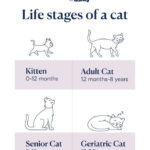On May 17, 1966, Bob Dylan took the stage for a performance that would become legendary. Just four years after his debut album, Dylan had ascended to an almost mythical status. His folk songs were seen as guiding principles for a generation navigating turbulent times. However, Dylan was increasingly drawn to the energy of rock and roll. This shift moved his music away from purely serious messages towards a more complex, even surreal, sensibility. His songs began to include social commentary delivered with a knowing wink, recognizing his own place and that of his audience within the world’s hypocrisies. This particular night in May highlighted the growing tension between Dylan’s evolving artistic vision and his audience’s expectations. The dynamic between the band and the crowd escalated, culminating in the infamous shout of “Judas!” This concert became known among fans as the “Royal Albert Hall” show, thanks to a widely circulated bootleg recording, further cementing its place in Dylan lore.
However, the famous “Royal Albert Hall” concert never actually took place at London’s Royal Albert Hall. It happened at the Manchester Free Trade Hall, over 200 miles away. This historical confusion, perpetuated by the mislabeled bootleg, wasn’t fully corrected until 1995. Interestingly, 1995 was also the year Chan Marshall released her first album as Cat Power. Now, Cat Power has released Cat Power Sings Dylan: The 1966 Royal Albert Hall Concert, a remarkable album that recreates Dylan’s setlist from that night, song for song. Marshall shares several artistic parallels with Dylan. Both artists employ an indirect, almost elliptical lyrical style. Both have experienced complex relationships with their audiences. Both are willing to explore new sonic territories, even if it means moving away from their established sounds. And crucially, both possess a vocal tone and phrasing that can tap into the emotional core of their musical sources, even when their styles seem superficially different. Cat Power’s decision to record her tribute not in Manchester, but in the actual Royal Albert Hall in London, underscores another shared trait: a playful understanding of how myth and legend can be just as potent, and in their own way, just as truthful, as factual accuracy.
Initially, Cat Power Sings Dylan appears to be a straightforward cover album. Marshall performed the songs live, meticulously following the structure of Dylan’s original set, including the famous mid-concert switch from a solo acoustic set to a full-band rock performance. She largely adhered to Dylan’s arrangements. If a song in Dylan’s version starts with an instrumental introduction or ends with a harmonica solo, Marshall’s version likely does too. Yet, this commitment to replicating the original performance with such precision ultimately becomes the album’s conceptual strength. When the similarities are so pronounced, the subtle differences become all the more striking and meaningful. Dylan’s 1966 performance has become a landmark moment in music history, signifying a shift in how rock artists could interact with their audiences – challenging them rather than simply aiming to please. It represented a generational change, encapsulated in one tumultuous evening. Cat Power’s approach, from the album title to the recording location, operates as both a sincere homage to the mythical “Royal Albert Hall” show and a thoughtful exploration of the enduring power of its legend.

